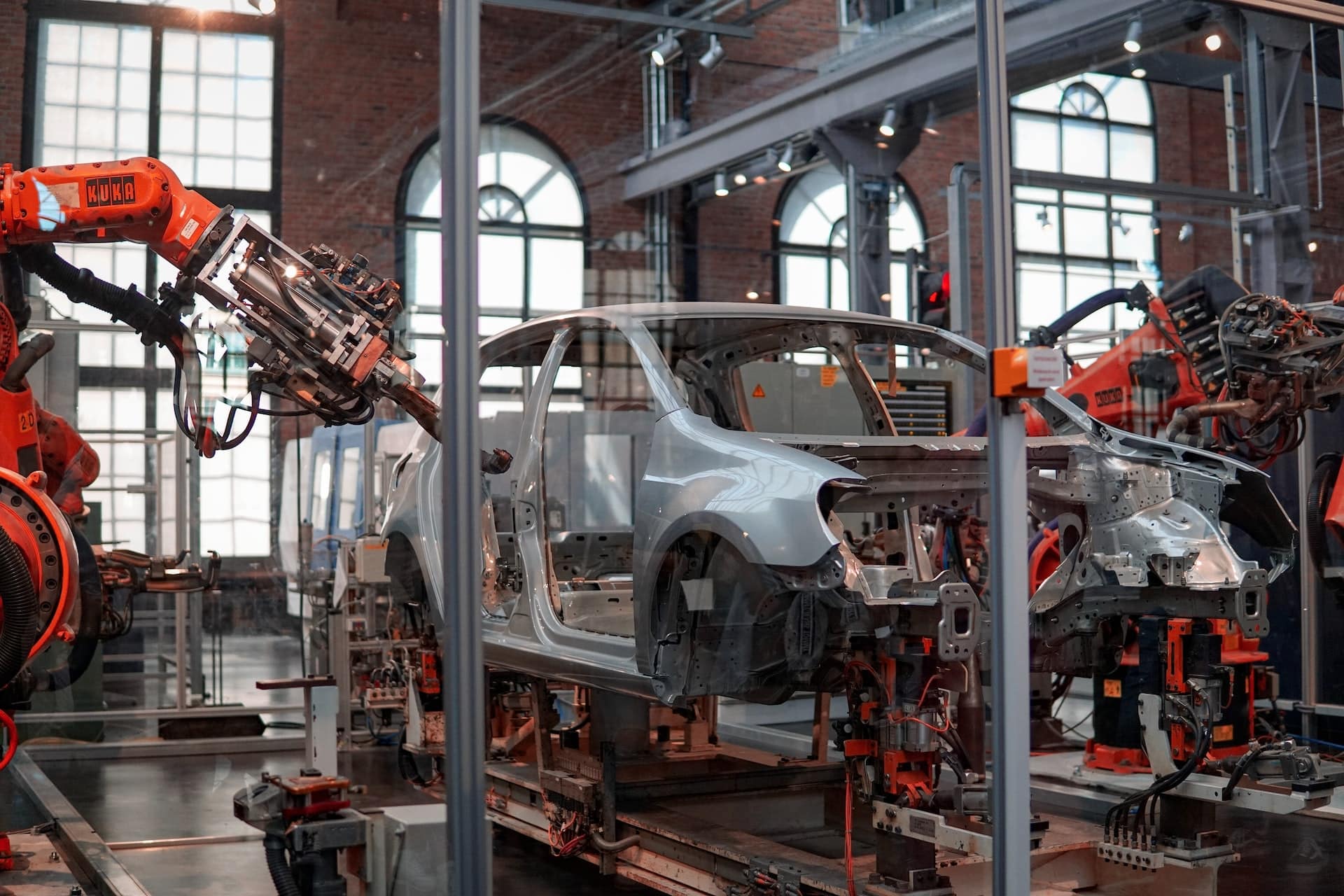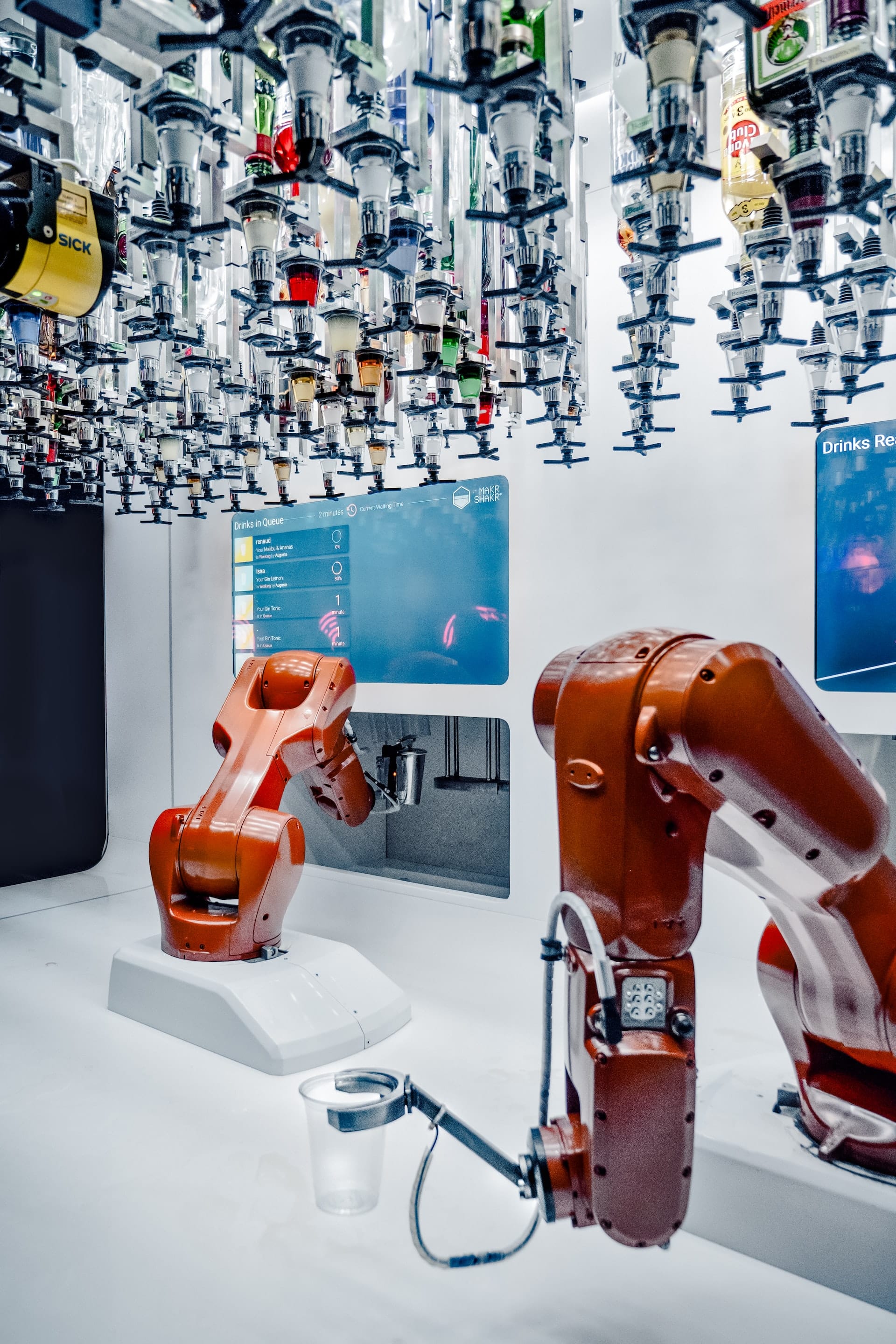Cobots are designed to work collaboratively with people and are typically smaller and lighter than traditional industrial robots. Their capabilities have made them a popular choice in manufacturing and assembly operations. But what distinguishes cobots from other types of robots? Let’s explore that question in this article.
IMAGE: UNSPLASH
What Are Cobots, And How Do They Work Differently From Traditional Industrial Robots?
Cobots are robotic systems designed to work safely alongside human operators on the factory floor. Cobots are programmed using graphical user interfaces (GUIs), unlike traditional industrial robots. It allows the operator to quickly configure a robot’s behavior without requiring specialized programming skills.
In addition, cobots employ force-torque sensors to detect contact with other objects and people and respond accordingly. It ensures that if there is any contact, the robot stops immediately and prevents potential injury or damage.
Cobots also have a much smaller footprint than their traditional counterparts, requiring less space for installation and operation due to their lower weight and size. It makes them ideal for operations in tight spaces where more giant robots cannot maneuver effectively.
What Advantages Do Cobots Offer Over Traditional Robots?
Cobots offer numerous advantages over traditional robots. The most notable advantage is working collaboratively with humans on the factory floor. It allows them to quickly and accurately complete tasks while reducing the possibility of errors or injury due to human-robot interaction.
Additionally, their intuitive programming makes them easy to set up and use, allowing companies to scale up production faster than ever. In addition, cobots can be dynamically reprogrammed for different tasks, allowing for greater versatility in operations.
Finally, their smaller size and weight make them ideal for operations in tight spaces and mobile applications where industrial robots may not be suitable.
Overall, cobots are an attractive option for many operations due to their safety, ease of use, and dynamic reprogramming capabilities. They can increase productivity and reduce labor costs while ensuring a safe working environment. As more companies begin to explore the possibilities of cobots in their operations, these machines will become increasingly common in industrial settings.
Case Studies Of Businesses That Have Successfully Implemented Cobots Into Their Workflow
Cobots have seen increasing adoption in recent years, with many businesses succeeding with their implementation. One example is the UK-based automotive components manufacturer Pressac, which has been using cobots since 2017 to automate its assembly processes.
The cobots successfully handle complex tasks such as screw driving and material handling, freeing up staff to focus on higher-level activities. These machines have enabled Pressac to increase productivity by 40% while improving accuracy and reducing waste.
Another company that has seen success with cobots is the U.S.-based healthcare provider Mercy Health. The company implemented a fleet of cobots in its distribution center to automate sorting and picking operations.
The Future Of Cobots And Their Impact On The Workforce
As cobot technology advances, these machines are expected to become increasingly ubiquitous in industrial settings. Shortly, they will automate more complex tasks and enable businesses to scale up production quickly and efficiently.
However, this increased automation could have an impact on the workforce. Some jobs may likely be displaced due to automation; however, other positions may be created due to cobots freeing workers from tedious or hazardous tasks.
Ultimately, while there are still many challenges associated with the widespread adoption of cobots, it is clear that they offer significant potential for improving productivity and safety in industrial operations. As more companies explore their possibilities, these machines may revolutionize factory floors worldwide.
Conclusion
Cobots offer many advantages over traditional robots, including their ability to work collaboratively with humans, intuitive programming, and smaller size. Businesses implementing cobots have seen increased productivity and reduced labor costs due to their automated processes.
In the future, these machines will likely become increasingly commonplace in industrial settings worldwide. As a result, businesses should be sure to explore the potential of cobots for improving productivity and safety in their operations.
IMAGE: UNSPLASH
If you are interested in even more technology-related articles and information from us here at Bit Rebels, then we have a lot to choose from.


COMMENTS